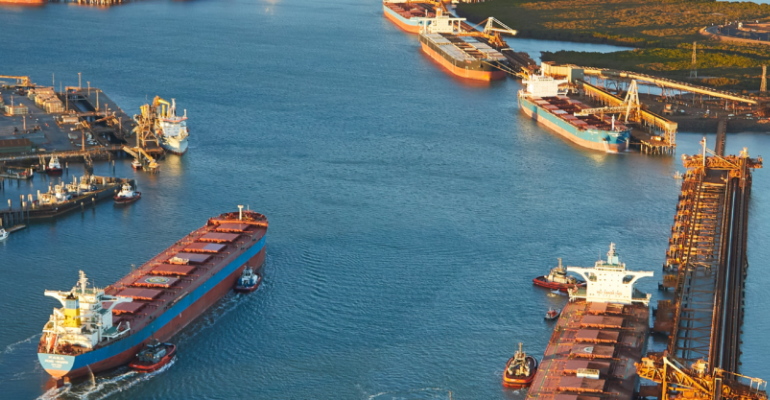Ships powered by clean ammonia could be deployed on the iron ore trade routes between West Australia and East Asia by 2028 and reach 5% adoption by 2030, according to a report based on analysis by the Energy Transitions Commission on behalf of the West Australia – East Asia Iron Ore Green Corridor Consortium—a group comprising the Global Maritime Forum (GMF), BHP, Rio Tinto, Oldendorff Carriers, and Star Bulk Carriers.
Ammonia was identified as the most likely zero-emission fuel for the green corridor, and so the forecast rests on the validation and acceptance of ammonia as a safe marine fuel and the development of sufficient bunkering infrastructure.
For ships to make it on the water by 2028, the current pace of progress would need to be maintained for factors like technology and regulatory development, said the report.
The corridor would also need a supply of green ammonia, which the authors say could be provided entirely by Australia in the near and long term if production ramps up as forecast.
“The study also shows that the Pilbara region of Australia is a viable option for bunkering on the route, avoiding costly deviations from the trade route, whilst Singapore remains well-positioned to serve as a bunkering hub,” said GMF.
If all goes as expected, some 360 vessels could operate on clean ammonia on the corridor by 2050. For that future to be realised, collaboration will need to continue along with co-ordinated action on throughout the corridor’s value chain.
Scott Bergeron, Managing Director Global Engagement & Sustainability at Oldendorff Carriers, said: “We are pleased to join in sharing this feasibility assessment to show how a well-considered green corridor can facilitate our collective desire to decarbonize shipping with an alternative fuel. While outside the scope of this report, the safety concerns and environmental risks of ammonia have yet to be adequately addressed. As the safety of our crew is paramount, these challenges must be overcome to enable adoption.”
Charis Plakantonaki, Chief Strategy Officer at Star Bulk, said: “Working closely with our business partners to assess the feasibility of green fuels and technologies is a core pillar of Star Bulk’s strategy. This study has allowed us to examine the potential for the demand, supply, and bunkering of clean ammonia in the West-Australia – East Asia corridor, an important trade route for our larger vessels. Through this work, we aim to complement parallel efforts of the industry to tackle other challenges related to ammonia as a marine fuel, including safety protocols and new engine designs, and to help advance the sector’s understanding on the pathway to a greener future.”
Rashpal Bhatti, Vice President Maritime and Supply Chain Excellence at BHP, said: “Through this collaboration with the Global Maritime Forum and the consortium members, BHP is pleased to see that the rigorous, data-led analysis of this study indicates the feasibility of using clean ammonia on vessels sailing through the West Australia to East Asia corridor. In line with our net zero ambitions, we seek to influence this supply chain, with our ecosystem partners, by creating demand for low- and zero-GHG emission fuels and energy efficient vessels.”
Copyright © 2024. All rights reserved. Seatrade, a trading name of Informa Markets (UK) Limited.
Add Seatrade Maritime News to your Google News feed.  |

